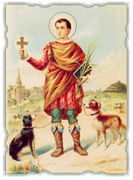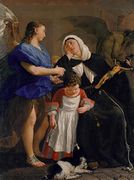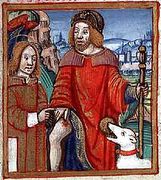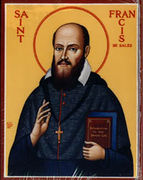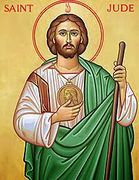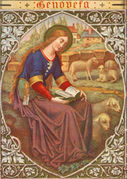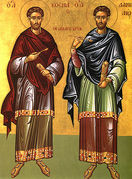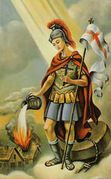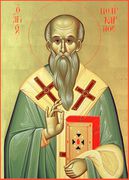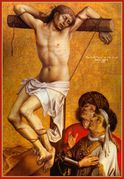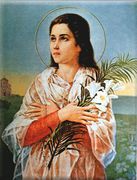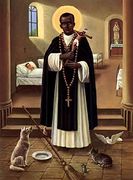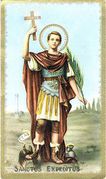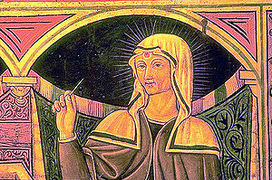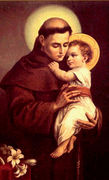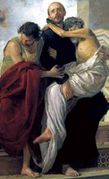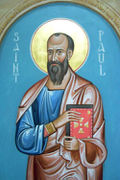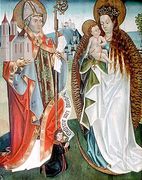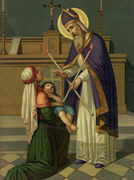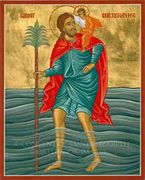User:Luisa Moura/research/work/Luisa Moura, patron saints, 2014
CHANNELS TO GOD
a list of troubles
SHORTCUT TO PRAYER
Patron Saints are specific links to God’s Grace in the Catholic and Orthodox tradition. They play the role of tailored channels for people’s
needs. Each one is known for their capacity to address particular problems, longings and fears. Besides their miraculous relationship with a
certain field of action, they are also related to one specific country or profession, grounding believers in their enactment of faith. This
hierarchy of communication is fundamental to render religion as a workable tool in everyday life. Generic prayer, to a Single Divine Ear,
seems to be inconceivable to address human ordinary needs.
Within a particular community people believe to be protected by their own Patron Saint. Despite the fact that others might be invoked in
special occasions, the local Saint makes part of one's identity. Praying to the local Patron carries higher chances of success once he is
believed to have higher responsibilities toward 'his' people. The Patrons not only carry messages to God, but also play the role of the
advocate. They intercede for the Believer. Prayers address specifically this plea and sometimes the promise of something in return. The
relationship between Patron Saint and Believer seems to have a very personal character. A mixture of respect and close friendship. It is with
immense care that people organize parties in their Patron honor, with pure love that the statues get to be covered with flowers or even money
"Saint Genevieve, you who by the days before, penance and prayer, ensured the protection of Paris, intercede near God for us, for our
country, for the devoted Christian hearts (...)"
This structure of communication with God is at the same time strictly regulated and flexible. All the Saints became recognized as such by
very similar factors and their identity is defined by the subtle differences in their life story. All together they define a Spectrum of
Ethical example and Divine Communication Vessels. The way to address them, the language code, the Prayer, is also standard, changing slightly
from language to language and according with the intensity and function of the plea. The flexible side of the Patronage system starts when
all this factors are taken into account and respected. Saints can be adored and addressed in multiple and personal ways. A single individual
can elect his own Patron Saint or pray to whoever he wants, as long as it is done in the proper way and to a canonized figure.
The life ingredients that seem to make part of every saint's identity regard the humbleness and sacrifice of their existence, the fact that
they had an encounter with God and sometimes their tragic death. Pain, humiliation and public exposure are considered fundamental factors for
human respect. They get the right to be adored after giving away a normal standard of dignity. It's impossible to address this issue without
going deeper into Catholic reasoning, the only thing that is important to note is that Saint's identity factors can be as subtle and specific
as these.
"From the moment I came to love suffering, it ceased to be a suffering for me. Suffering is the daily food of my soul" (Faustina's diary)
"A number of Christian saints are traditionally represented by a symbol or iconic motif associated with their life, termed an attribute or
emblem, in order to identify them. They were particularly used so that the illiterate could recognize a scene, and to give each of the saints
something of a personality in art. They are often carried in the hand by the saint (...)"
People's needs of expression are addressed in a very effective way by this Divine Communication System. It is a Media Structure at its very
best. Including the dependency it creates upon the user, in this case the Believer. The more the Saints get to be adored and included in
every day's needs, the less likely will people be able to live without them. In this sense we see a clear example on how communication
channels on their own establish subtle systems of control. No other means to induce religious everyday practice is necessary. It's extremely
complete. It feels personal, it is collectively recognized, is is diverse and flexible, it has rules and therefore induces nice feelings of
accomplishment and discipline, it implies an image, a statue, triggering the pleasure of collecting, keeping and crafting.

